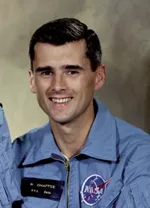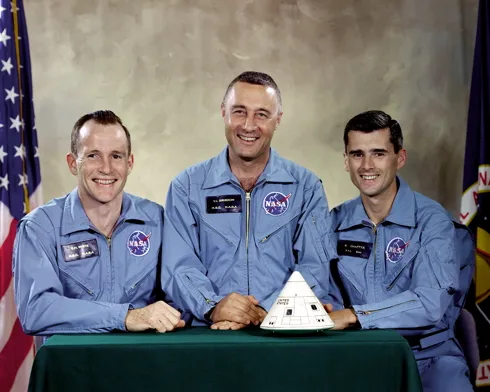
The crew of the ill-fated Apollo 1 mission: Edward White, Virgil 'Gus' Grissom and Roger Chaffee
Credit for all images: NASA
This Friday, 27 January, marks the 45th anniversary of the Apollo 1 mission, which ended tragically when fire broke out during a launch pad test. The three crew members – Virgil ‘Gus’ Grissom, Edward White and Roger Chaffee – were all killed in the blaze. But in the aftermath of the fire, lessons were learned that ensured the Apollo programme could safely continue – leading eventually, of course, to Armstrong and Aldrin’s historic Apollo 11 mission, which saw mankind set foot on the Moon for the first time.
Apollo Saturn-204 or AS-204, as the mission was originally known, was to have been the first manned flight in the Apollo programme, and was scheduled for lift-off on 21 February, 1967. The fatal accident occurred during a dummy run on 27 January, which was a ‘plugs-out’ test – testing the spacecraft’s ability to operate on its internal power. The test was believed to be relatively hazard-free, as there was no fuel onboard the craft and all pyrotechnic systems were disabled.
However, the ‘launch’ was beset with difficulties, including problems with communications systems and a ‘strange odour’ noticed by Grissom, the source of which remains a mystery. For this reason, the Block 1 Command Service Module (CSM) being used for the mission was still on the launchpad at 6.30pm, several hours later than intended, when Chaffee reported “We’ve got a fire in the cockpit.”
A mere 17 seconds later transmissions from the cockpit ended abruptly with a cry of pain, and then a hiss as the pressurised cabin ruptured. Due to differences in pressure between the inside and outside of the cockpit, it took ground crew five minutes to open the hatch, by which time all three astronauts were dead.
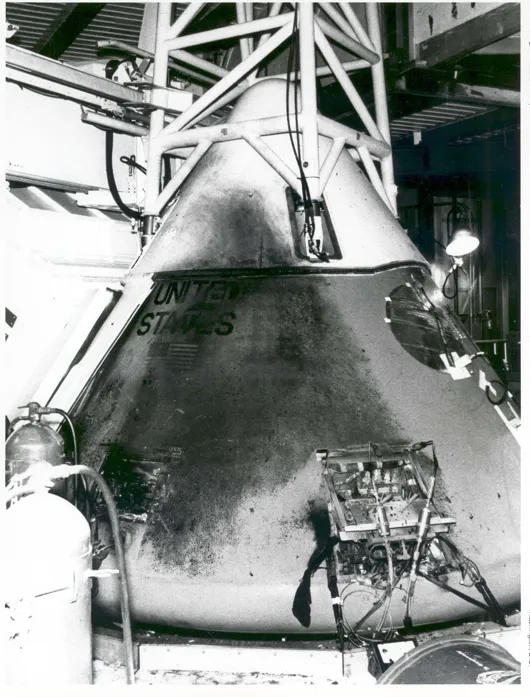
The aftermath
Immediately after the disaster, an Apollo 204 Review Board was set up by NASA, which published its findings in April 2007. The fire was attributed to an electrical fault within the cockpit. Exacerbating factors had been the extensive use of flammable materials in the construction of both the cockpit itself and the astronauts’ space suits, plus the high-pressure pure oxygen atmosphere within the cockpit.
In response to these findings, NASA began to use a nitrogen-oxygen mixture in the cockpit, as well as moving to a Block II CSM design, the hatch of which could be opened more easily in the event of an emergency, and vastly reducing the use of flammable materials. The Apollo 1 crew had expressed their concern about the use of such materials to Apollo Spacecraft Program Office manager Dr Joseph Shea the previous year.
Shea blamed himself for the accident and suffered a nervous breakdown in its aftermath, leaving NASA before the year was out and taking up a position with the Polaroid Corporation. He would later become an adjunct professor of aeronautics and astronautics at the Massachussetts Institute of Technology, and worked with NASA again in the early 90s, helping to develop the International Space Station.
Grissom and Chaffee were buried at Arlington National Cemetery in Virginia; Ed White was buried at the cemetery of the United States Military Academy in West Point, New York. All three men’s names are listed on the Space Mirrror Memorial at the Kennedy Space Center in Florida, and an Apollo 1 mission patch – the mission was officially renamed ‘Apollo 1’ at the request of the deceased astronauts’ families – was left on the Moon’s surface by Neil Armstrong and Buzz Aldrin.
APOLLO 1: THE CREW
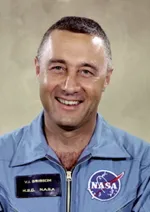
Lt Col Virgil ‘Gus’ GrissomCommand Pilot
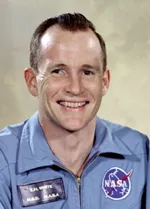
Lt Col Edward H White IIPilot
